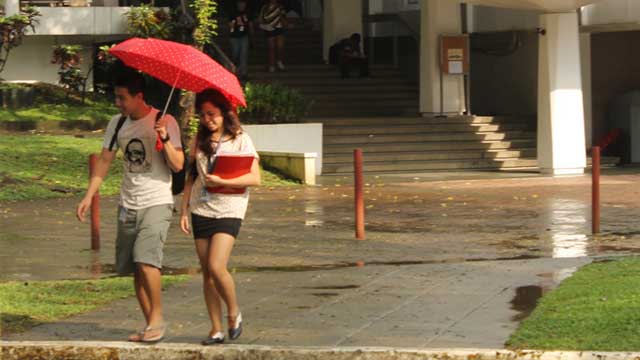SUMMARY
This is AI generated summarization, which may have errors. For context, always refer to the full article.

MANILA, Philippines – One possible effect of the K to 12 program is the closure of some higher education institutions (HEIs) in the country, Commission on Higher Education (CHED) Chairperson Dr. Patricia Licuanan said in an interview with Rappler.
“We have instructed our technical panels [to] review all programs. [They should] ask themselves whether they should be a full bachelor program, [or] can the same skills be met or developed through middle level schools training, [or] through TESDA,” she said. TESDA refers to the Technical Education and Skills Development Authority.
With the signing of the Enhanced Basic Education Act of 2013 last May 15, two years have been added to the basic education system of the Philippines.
The first batch of students under the program will enter senior high school’s grade 11 in 2016, and grade 12 in 2017. HEIs will not have college freshmen enrollees during these two years.
CHED is already preparing for this two-year enrollment gap, as well as other effects the K to 12 program may have on HEIs.
Rethink business model
Licuanan said this is an opportunity for schools to rethink their business model and ensure the quality of education they can offer to graduates of the K to 12 program, even if it means some of them would have to close business.
“I don’t want to sound heartless, but [with] almost 2,000 higher education institutions, it may not be all that bad,” she said.
While the senior high school curriculum will provide specializations for employment, collegiate studies will remain an option for Filipino students.
“Actually K to 12 is just a good basic education program, and you get a good basic education. So if you want a job, you’re ready for a job. If you want to go to college, you’re better prepared for college.”
Despite technical panels responding differently to the program, CHED will still look into how they can help in it.
“CHED is planning to talk with schools to think through what can be done. [K to 12] is a necessary evil; if you add two years [of basic education], there will be two years where the [supposedly graduating batch] will stay in school,” she explained.
INFOGRAPHIC: 10 things about K to 12
Parallel review
On Tuesday, July 2, CHED signed a Memorandum of Agreement with the Philippine Business for Education (PBEd) to conduct parallel reviews of the Policies, Standards and Guidelines (PSGs) for 4 academic programs:
- Business Administration
- Information Technology
- Hotel and Restaurant Management
- Electronics Engineering.
The results of the parallel review process will be presented to CHED for integration into the revised PSGs before the end of the year.
PBEd Chairman Ramon del Rosario said the 4 courses were shortlisted because a large number of Filipino students take them up. “[It’s] really choosing a small number of degrees where there’s a large number of people; you’re covering 50% [of the students] by those four courses. That’s where everyone is,” he said.
The parallel review will look into the curriculum and the competencies of these courses.
“We’ll go back to what are the competencies the industry need out of the graduates of the K to 12 system so that they become productive and good workers,” he added.
A college or university can only offer an academic program after the submission of the required PSGs.
Earlier on Tuesday, PBEd, CHED and the United States Agency International Development (USAID) also formed an industry-academe council involving representatives from the industry and the academe.
Del Rosario said the goal of the newly-formed council is to strengthen the linkages between both sectors to ensure that the education system is “responsive to the needs of industry but [focused] on the competencies.”
Technical-vocational
They are also looking to develop an educational model patterned after Germany’s “National Pact on Vocational and Educational Training.” This apprenticeship program has helped Germany combat high youth unemployment rate.
Strengthening the tech-voc system in the country “fits nicely” with K to 12’s upcoming senior high school, del Rosario noted.
“The view of technical-vocational (tech-voc) courses in Germany is quite different from here. Here, we look at it as a second class thing. There they look at it as a premium: those who graduate from tech-voc are the most desired employees—highly-employable, because of the quality of the tech-voc training that they get, and also because of the track record. We want to move in that direction here also,” he said.
But for this model to work, he said it has to start with a social compact among different sectors involved: industry, education, and government.
“So you open up training opportunities on a broad basis; even if they [trainees] end up with your competitor, you view it as a big thing that will benefit the entire country,”
PBEd, along with TESDA Secretary Joel Villanueva, met with Germany’s Minister of Labor to discuss this model. A team will be sent to Germany to study the model more and come up with a Philippine design. – Rappler.com
Add a comment
How does this make you feel?
There are no comments yet. Add your comment to start the conversation.